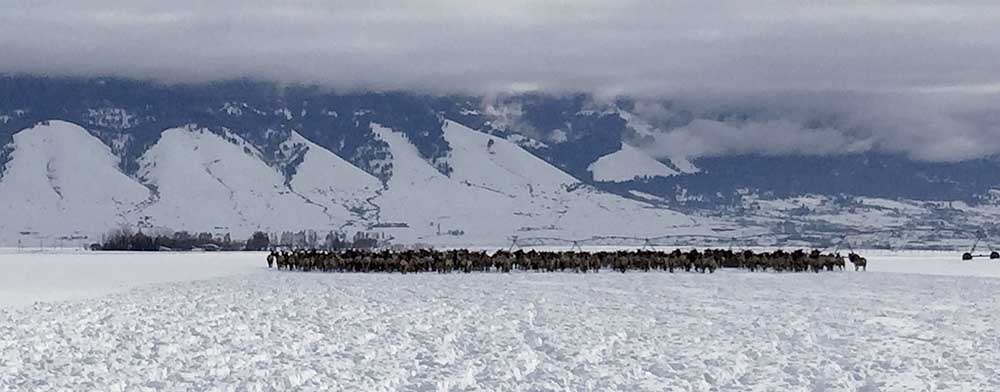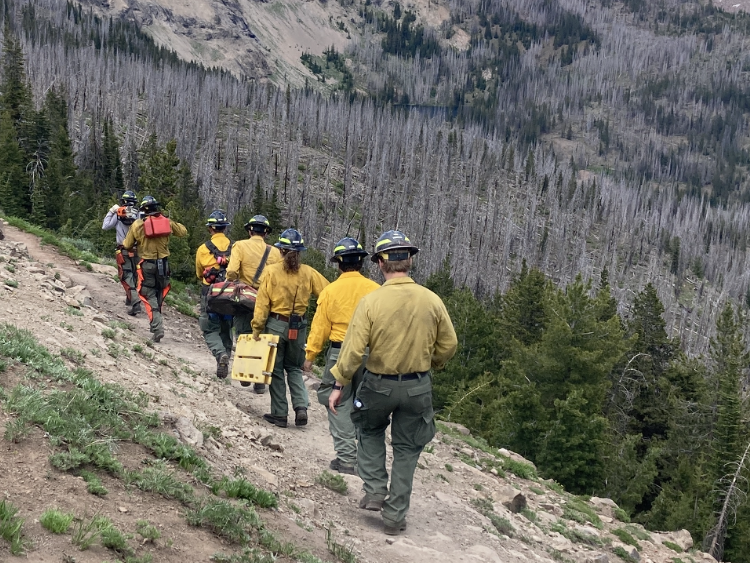Ranchers, wildlife managers grapple with NE Oregon elk
Published 10:30 am Monday, November 18, 2019

- Large numbers of elk are causing damage on private property in portions of Wallowa County in the northeastern corner of Oregon.
ENTERPRISE — Wallowa County’s elk herds have long attracted hunters, bringing economic stimulus to the region each fall, but the treasured big game species also compete for forage with cattle, the county’s main agricultural commodity.
In the past few decades, wildlife managers and ranchers have worked together to reduce the loss of valuable livestock feed to elk by hazing and extending hunting seasons on private land.
Pat Matthews, Oregon Department of Fish and Wildlife Enterprise district biologist, said over the past 20 to 30 years the elk numbers have stayed the same in Wallowa County but the distribution has changed, putting more pressure on crops, haystacks and rangeland.
To complicate matters, a few of the large properties, like a ranch in the Wallowa River canyon, are managed to encourage wildlife use, thus providing a corridor from the high mountain meadows to winter livestock pastures.
“They own that ranch for elk and they spill over to the neighbors,” Matthews said. “It’s been an issue.”
In the county’s northern Chesnimnus wildlife unit, the redistribution of elk from the forest to private land on the Zumwalt Prairie is the most noticeable.
In 2008, when the elk numbers were in the thousands, rancher Tom Birkmaier said he turned to OSU extension agent John Williams to help him organize a coalition of landowners and Fish and Wildlife biologists to find ways to reduce the number of elk.
“When we do good range management we use a deferred or rest rotation system, but when 4,000 head of elk are grazing in the same place most of the year there is no rotation system,” Williams said.
For a few years state Department of Fish and Wildlife managers pushed the elk back onto public forestland and into Hells Canyon using an Access and Habitat grant. Matthews said hazers on ATVs moved the herd toward the canyons five days a week for several winter months, but the elk kept returning to the prairie.
Chad Dotson was one of ODFW’s hazers and now works for The Nature Conservancy managing Zumwalt Prairie Preserves hunting program. He said hazing became a “babysitting” job.
“Elk will respond to pressure, but that doesn’t mean they are going to change their home range,” Dotson said. “From an elk’s perspective it is a generational thing — a calf born to a mother who doesn’t migrate won’t migrate. All it knows is the prairie and that becomes its fish bowl.”
Outside organized hazing on the Zumwalt Prairie, Matthews said the state issues hazing permits allowing landowners to scare elk away with shotguns or propane cannons or chase them with ATVs.
Ultimately, increased hunting provided the most relief. Williams said today hunters are harvesting about 450 cow elk a year out of 700 issued tags.
“I do believe hunting stopped the increase of the Zumwalt herd, but we need to wait and see if over time we are reducing them,” Williams said.
And that, he said, could take another 10 if not 20 years.
Most of the hunting tags issued for the Zumwalt are through the state’s scheduled control hunts. Depredation tags are issued to landowners by a state district biologist and used to reduce deer and elk numbers on private property. In extreme situations, Matthews said emergency hunts are allowable when several property owners are experiencing crop or hay loss.
The state has a list of hunters at the ready, alleviating landowner from having to organize hunts.
Kill permits can be issued to a landowner or adjacent landowners who want to work together, Matthews said. Landowners and any affiliated agents listed on the permit are allowed to shoot a specified number of elk, determined by the district biologist.
Mike Hale, who works on The Nature Conservancy’s Zumwalt Prairie Preserve, said the years of hunting pressure from mid-August to early January has helped reduce numbers, but moving the elk off the prairie could be merely moving the problem onto someone else.
“Now there are more elk on the toe slopes of Imnaha Canyon, but some are pushing west into private land to the west near Elk Mountain and Swamp Creek,” Hale said.








